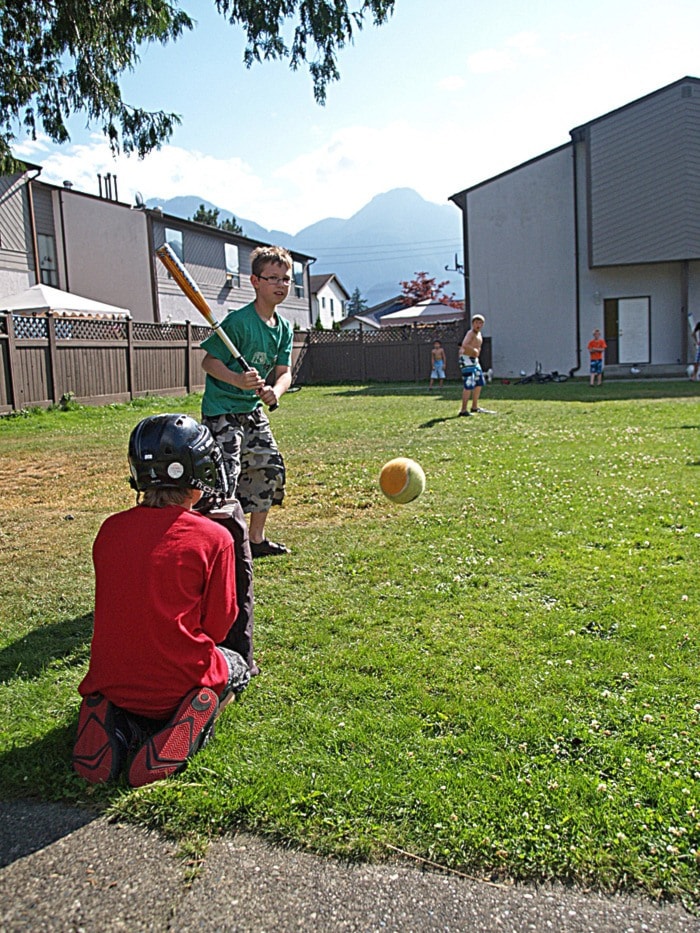Normally, sitting in front of the television inspires... more sitting in front of the television.
In the case of young Kaj Behrens, watching his first cricket match inspired him to get a few friends together to invent a new game that borrows pieces from hockey, baseball and cricket.
“We call it Wild Charge," said the 10-year-old C.E. Barry student last Thursday. “I don’t know where I got that name from.
“We’ve also got a game we call Rookie that is part football and soccer and it involves tackling, kicking — and clotheslining!”
Kaj (pronounced ‘Kigh’) and his dad, Erhard, were watching cricket on TV this spring.
“It was when the Pro 20 was in India,” said Erhard. “I gave Kaj some pointers on how to play.”
Erhard grew up in Cullinan, South Africa, a small diamond-mining town near Pretoria. There was plenty of cricket played there and Erhard knows the game well.
After Kaj had gotten his fill of the televised match, he went and got his friends Jarren Payant and Tanner Cormier, both aged 9, who also live at the condo complex on Douglas Street.
A full game of cricket takes 11 defenders and 11 batters, two at a time. The boys didn’t have a cricket bat or even one wicket — and their field in the condos’ commons area was way smaller than a normal pitch. The rule of the day was ‘improvise.’
“I got my baseball bat and some tennis balls and Jarren got his hockey helmet and a street hockey goalie pad,” said Kaj.
“You just need a pitcher, a wicket and a batter,” he explained during a break in the game. “We didn’t have a real wicket, so we combined a baseball back-catcher and a cricket wicket.”
The boys take turns at each position and when it’s time to be the wicket, they don the helmet and crouch down low behind the goalie pad, which makes the target about the same size as a real cricket wicket.
“If the pitcher hits the wicket, the batter is out,” explained Kaj. “But if the batter gets hit, he gets a point — and if he hits it out of the area, it’s 20 points.”
About 15 paces from the wicket, a rolled up newspaper acts as a pitcher’s mound and a base for the batter to run to. Like in cricket, the batter runs to the far base, then back to the home base.
“If we catch a fly ball, the runner’s out,” said Kaj. “And if he isn’t at a base, we can tag him with the ball, or throw it at him and hit him... even in the head.”
Luckily, they aren’t using a real cricket ball, which is akin to a lump of hardwood wrapped in leather.
On a good hit, they can run six lengths before stopping... sometimes to go help find the ball. There are many fences, trees and roofs in the area, so it’s easy to lose track of a well-hit ball. As of Thursday, they’re still looking for two.
It’s a fairly new game, so rules need to be tuned up as the need arises.
“We have no teams. We’re on our own,” said Kaj. “So if two people are arguing about a play, they just ask the other person if they’re out or safe.”
Thursday, the usual group of three expanded to six, with Dylan Younie, Damian Stephenson and Erhard joining in. When Erhard nailed a ‘boundary’ off a rooftop and into a neighbour’s back yard, the game took a bit of a break.
Of the original three, Kaj figures Tanner is the best pitcher. The other two boys agreed.
Tanner’s secret? “Make the ball bounce first, then it’s harder for him to hit.”
Jarren was voted the best batter — the only lefty of the three, though he writes with his right hand.
“My secret is my extra grip,” figured Jarren.
Now the secrets are common knowledge.
Wild Charge — a simple game that is simply a lot of fun.
